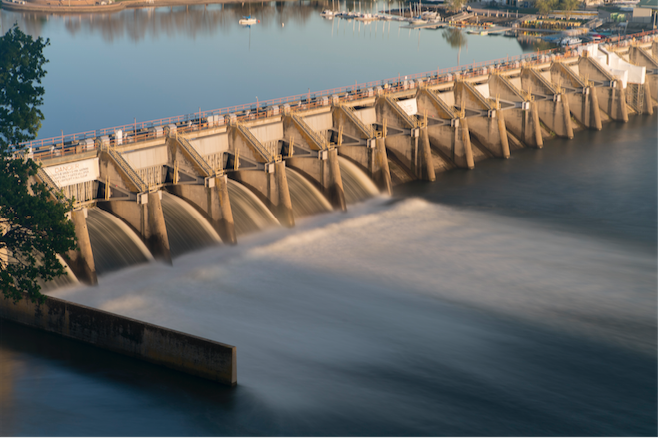Quick Summary
- Sacramento temperatures expected to be 10 F higher by century’s end
- Sierra Nevada snowpack to nearly disappear by 2100, plus many other impacts
- Report suggests possible solutions for every challenge and threat posed to region
Over the next few decades, climate change is expected to make the Sacramento region hotter, drier and increasingly prone to extremes like megadroughts, flooding and large wildfires. This is expected to strain the region’s infrastructure for water and energy transmission, agricultural systems, plants and wildlife, public health, housing, and quality of life for the growing region.
But there are many solutions at our disposal, which could grow the economy, create new jobs, and reduce climate threats on households, businesses and industry.
That’s according to the Sacramento Valley Region Report, one of 13 summary reports within California’s Fourth Climate Change Assessment. The regional report was led by the University of California, Davis, and includes several solutions to minimize or avoid these threats between now and 2050.
“This is where Sacramento’s homeless and housing challenges intersect with climate threats,” said coordinating lead author Benjamin Houlton, director of the John Muir Institute of the Environment and a member of the University of California’s Global Climate Leadership Council. “Climate change is a threat multiplier for just about everything we depend on and value. A climate-smart Sacramento transforms this major challenge into a better economy, creating a cleaner, healthier and more just community for all.”
Extreme heat
The Sacramento Valley will likely see daily maximum temperatures increase by 10 degrees Fahrenheit by the end of the century. In Sacramento’s Midtown, the average number of extreme heat days, where temperatures are 104 degrees Fahrenheit and above, is expected to increase from four days a year to 40 days by 2100.
“It’s going to be a different world for us and especially our kids,” Houlton said. “To cope with rising temperatures, we need to start learning from communities like Phoenix, Arizona, that look like now what we may look like in the future.”

Parts of Sacramento with extensive asphalt surfaces and roofs, without much tree shade, are up to 7 degrees warmer in the summer compared to the metropolitan average.
To reduce heat exposure for residents, the report suggests planting trees to shade parking and neighborhoods, using green-building design like cool roofs, and opening public cooling centers where citizens without air conditioning can go during high temperature extremes.
Floods
Sacramento is one of the major U.S. cities at greatest risk for catastrophic flooding. A mega-flood such as that seen in the “Great Flood” of 1861-1862, which flooded most of the valley, is much more likely by 2100. Subsidence, or sinking land, and sea level rise also will increase flood risk along the Sacramento-San Joaquin Delta.
Flooding threats to urban areas may be reduced by levee setbacks, flood detention basins and better land use planning and building codes. Floodplain restoration projects can also help create water storage, flows that help fish and other wildlife, and enhance flood protection.
Water supply
Increased water conservation, groundwater banking, stormwater-capture strategies, sustainable expansion of water storage capacity, and attention to integrated water management could help increase and manage water availability in the face of more extreme drought, flood risks and reduced snowpack.
Annual snowpack in the Northern Sierra, a key water source for the region, is expected to nearly disappear by the end of the century, and precipitation will fall mostly as rain. This could bring more surface runoff and require water reservoirs to operate at a lower capacity to avoid floods. More extreme droughts are also expected with impacts to people, plants, fish and other wildlife.

“Overall, the report shows that the Sacramento region faces serious challenges with a changing climate,” said coordinating lead author Jay Lund, director of the UC Davis Center for Watershed Sciences. “Climate change must be addressed along with many other challenges in the region. Fortunately, the valley has many institutions with skills and resources to help address these challenges, if we are attentive and organized. The Sacramento Valley’s original European settlers faced major climate, economic and health challenges when they first arrived. They suffered for decades before they became organized to prosper in their new climate.”
Agriculture
Climate change is expected to change the crop varieties that can be grown in the Sacramento Valley. Field crops, orchards, grains, grapes, corn and crops grown for distant markets could decline between 2 and 11 percent. Despite increased yields for some crops, the total cultivated area in the Sacramento Valley is likely to decrease.
Investments in precision agriculture, water sensors and drones, and planting crop varieties more tolerant of drought and heat should help. The report provides case studies of local ranchers and farmers working with scientists to improve their soils, store carbon, increase water efficiency and reduce greenhouse gases.
Forests and wildfire
Wildfires will continue to occur more frequently, over a wider area and burn more intensely in the coming decades. Prescribed fires, strategic forest thinning, and practices that promote carbon storage could decrease wildfire frequency and intensity and create cleaner air.
Public health
Climate change can impair mental health, and its associated pollution from wildfire smoke, transportation and other sources can contribute to heart, respiratory and other diseases. Alternating drought and extreme precipitation can also promote the spread of disease-causing pathogens, including diseases such as West Nile virus and valley fever.
The report said California is not optimally prepared to take on additional patient loads from natural or human-made disasters or disease outbreaks. It suggests the region enhance its emergency response and preparedness plans and resources in advance of a crisis.
Energy
Reduced snowpack and increased evaporation will strain hydropower resources, the region’s main source of electricity. Extreme heat can also stress renewable and fossil-fuel-based energy transmission systems. Increases in peak hourly demand during hot months could be more pronounced. People will likely use air conditioning more in the hot months, but this will be offset by reduced use of heating in cooler months.
To meet electricity demands, the report suggests investing in battery storage solutions, decarbonizing buildings and transportation, and deploying distributed generation and energy storage for more local control of the energy supply.
Transportation
Aggressively expanding “active transportation,” which includes supporting bicycling infrastructure, could help reduce air pollution and greenhouse gases from transportation, which makes up 37 percent of the state’s GHG emissions. State policies that integrate alternative fuel aspirations and driving trends, such as by encouraging electrified autonomous vehicles, could also encourage a shift to low-carbon alternatives and active transportation.
About the assessment
California’s Fourth Climate Change Assessment is a series of reports that provide new science and planning tools to ready the state for climate change. The reports detail the effects of climate change now and in the future so communities can prepare for more severe wildfires, more frequent and longer droughts, rising sea levels, increased flooding, and more extreme weather events. The state will assist in hosting various region-specific workshops to catalyze action to address these challenges.
Additional leading authors of the report include Steven Greco, Jonathan London, Helene Margolis, Debbie Niemeier, Joan Ogden, Paul Ullrich and Stephen Wheeler of UC Davis, and Steven Ostoja of USDA Climate Hub.
Research scientist James Thorne also was lead author on the overall assessment’s capstone report, which summarizes the key findings.
To access the full California’s Fourth Climate Change Assessment, please visit www.ClimateAssessment.ca.gov.
Media Resources
Benjamin Houlton, UC Davis John Muir Institute of the Environment, 530-752-2210, bzhoulton@ucdavis.edu
Jay Lund, UC Davis Center for Watershed Sciences, 530-752-5671, jrlund@ucdavis.edu
Kat Kerlin, UC Davis News and Media Relations, 530-750-9195, kekerlin@ucdavis.edu
